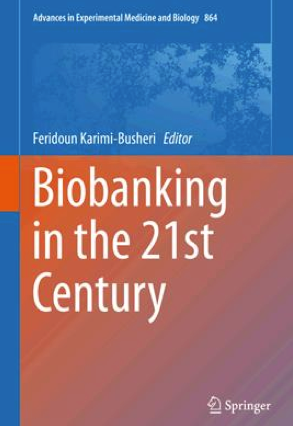 With Europe Biobank Week 2018 in Antwerp, Belgium coming up (September 4-7th) people will be reviewing the available information on the subject. A definitive book is published by Springer - and of the fourteen chapters, chapter five, "The Future of Cell Preservation Strategies" by John M. Baust et al will probably interest our customers.
With Europe Biobank Week 2018 in Antwerp, Belgium coming up (September 4-7th) people will be reviewing the available information on the subject. A definitive book is published by Springer - and of the fourteen chapters, chapter five, "The Future of Cell Preservation Strategies" by John M. Baust et al will probably interest our customers.
Dr Baust introduces this subject: " ... cryopreservation is often viewed as an “old school” discipline yet modern cryopreservation is undergoing another scientific and technology development growth phase. In this regard, today’s cryopreservation processes and cryopreserved products are found at the forefront of research in the areas of discovery science, stem cell research, diagnostic development and personalised medicine. As the utilisation of cryopreserved cells continues to increase, the demands placed on the biobanking industry are increasing and evolving at an accelerated rate. No longer are samples providing for high immediate post-thaw viability adequate. Researchers are now requiring samples where not only is there high cell recovery but that the product recovered is physiologically and biochemically identical to its pre-freeze state at the genominic, proteomic, structural, functional and reproductive levels".
He continues "It is often unappreciated that in order for a cell to be successfully cryopreserved the cell itself must avoid freezing, therefore remaining in a state of deepening hypothermia until glass transition temperature is reached. In essence, for a cell to be successfully cryopreserved, it must remain in a ultra-cold liquidous state until transitioning to a glassy state. Generally speaking, if ice forms within a cell during any part of the process, survival will be compromised. Cryoprotective agents (CPAs) function, in part, to lower the probability of intracellular ice formation.... today's CPAs include a variety of penetrating (membrane permeable) and non-penetrating compounds contained in an appropriate cell culture media with or without serum."
The science of Biobanking, which initially involved simply storing blood or tissue samples in a freezer, is now a highly sophisticated field of research, and expected to grow exponentially over the next decade or two. The book aims to enrich the available literature by offering a useful collection of ideas for the future. It outlines the experiences of developing modern Biobanking repositories in different countries, whilst covering specific topics regarding its many aspects.
For further information
Biobanking in the 21st Century, Springer

